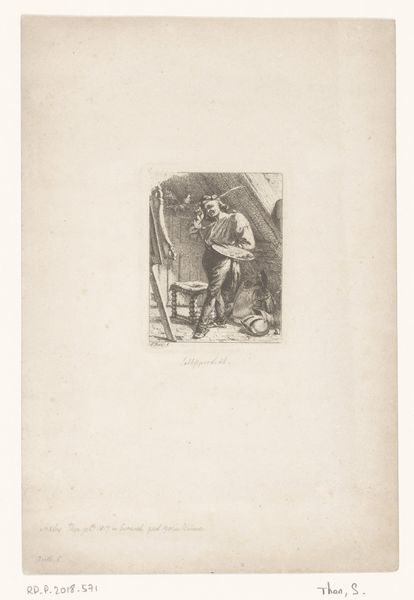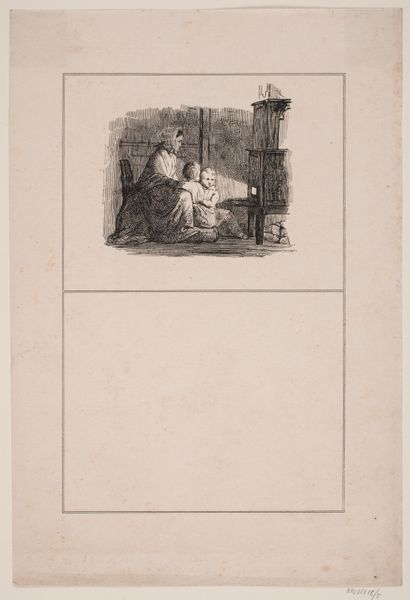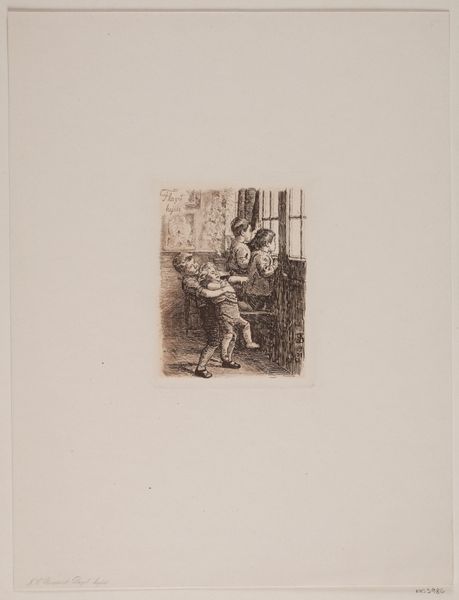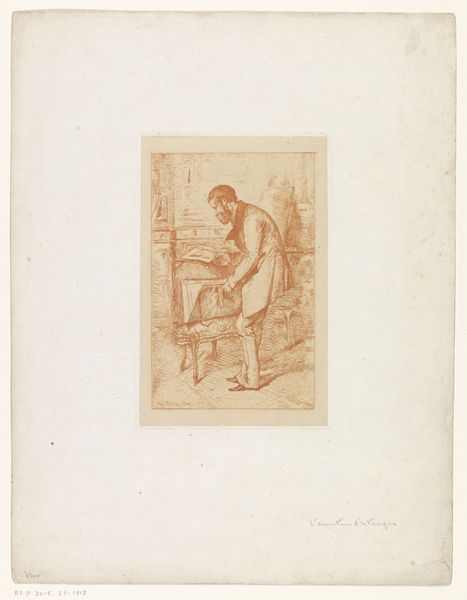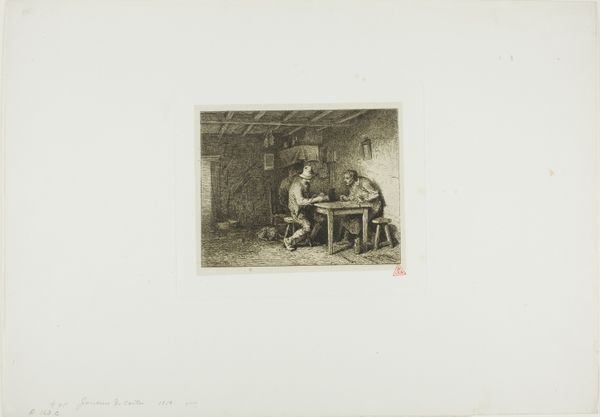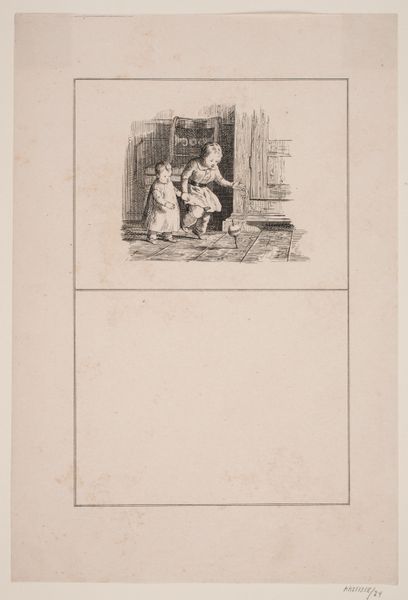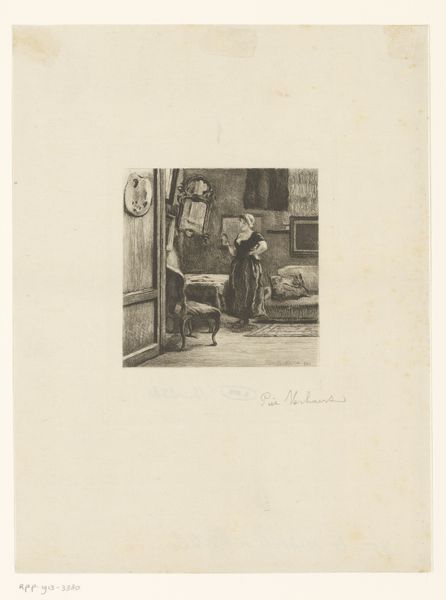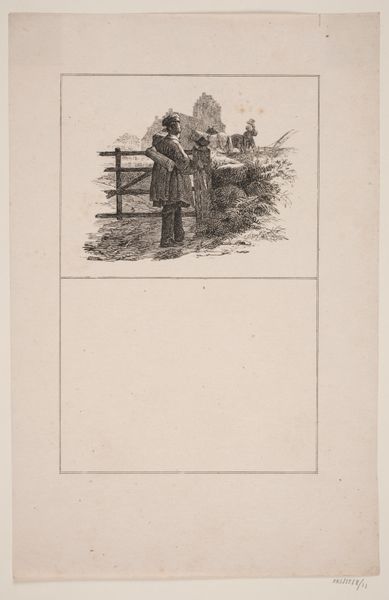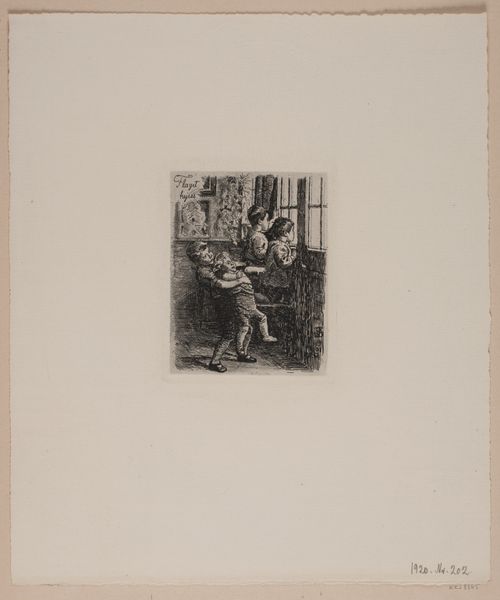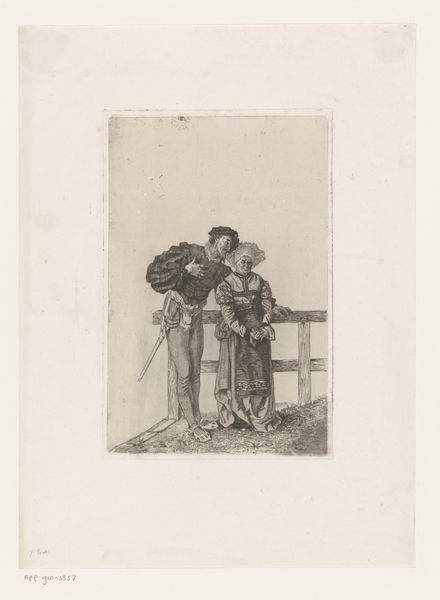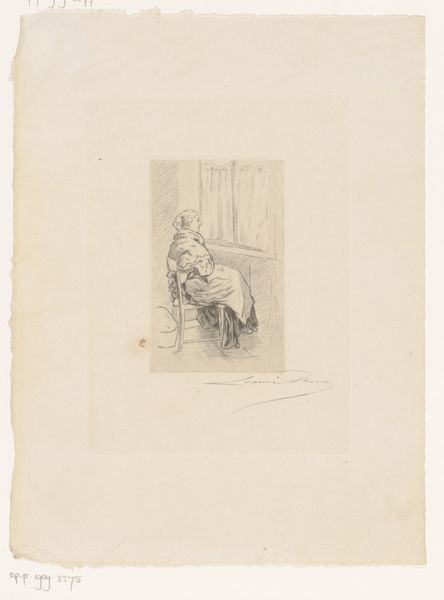
drawing, print, etching
#
drawing
#
16_19th-century
# print
#
etching
#
genre-painting
#
academic-art
Dimensions: 61 × 53 mm (image); 62 × 54 mm (plate); 115 × 93 mm (sheet)
Copyright: Public Domain
Editor: This is "The Sergeant Reporter," an 1862 etching by Ernest Meissonier, held at the Art Institute of Chicago. There's an interesting balance, or imbalance really, between the figures, one so imposing and the other huddled over paperwork. What captures your eye about it? Curator: Oh, Meissonier! Always with the precise detail, even in these smaller works. But you're right, there's something compelling about that imbalance. For me, it's the power dynamic, distilled into ink on paper. I wonder, what do you think they’re arguing about? It's more than just a report, wouldn’t you say? Editor: It feels like the sergeant is definitely delivering some difficult news or perhaps correcting something in the report itself. I also notice how muted the details are in the background and yet every crease of the sergeant's clothing can be made out. Curator: Exactly! It speaks to priorities. The sergeant and his duty— or perhaps *his* version of the story– are sharply defined. Everything else fades. Meissonier was painting in a time of tremendous social upheaval. He adored details and miniatures because maybe these things feel knowable or conquerable? A fascinatingly intimate view of possibly such large, difficult themes like power, truth, or perhaps simply control. What did you take away? Editor: I guess the contrast really highlights the sergeant's authority, and how even seemingly mundane tasks like filling out reports are imbued with that. I had not thought about it so much, I really appreciate your reading on power and control, that feels very appropriate. Thanks! Curator: My pleasure. And isn't it interesting how a simple etching can spark such thoughts? Makes you wonder about the stories etched into our own lives, eh?
Comments
No comments
Be the first to comment and join the conversation on the ultimate creative platform.
